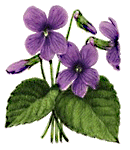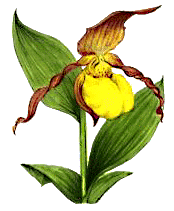 Plant Michigan Natives..."because restoring habitat begins right in our own yards"
Plant Michigan Natives..."because restoring habitat begins right in our own yards"

MICHIGAN! I have said the following more than once..."If for some reason I was forever confined to never going beyond the boundaries of Michigan, I feel I could very well live with that situation. I consider Michigan one of the most fantastic spots on earth. Its distinct beauty and incredible diversity of both plants and animals continually lure me back to dunes, lakeshore, prairies, forests, and, especially, to glorious wetlands - hours become minutes while exploring everything that lives in a Michigan wetland."

Michigan has done quite well for itself in a rather short period of time (geologically speaking). Just 18,000 years ago this land was nothing but a huge slab of ice. However, things warmed up a bit, and the glaciers scraped their way on out of here. Then the plants started moving in. Jack, Red and Eastern White pines began to move in from the east. Oaks and hickories began to move in from the warmer south. Prairie started to trek in from the west. Climate continued to vary somewhat, and plants continually jostled for position. However, climate finally stabilized a few thousand years ago, and the plants settled in and formed their communities. Because of the harsh glacial movement, the land was left with all sorts of various sized depressions which became all our many wonderful wetlands. And where there's lots of water, there's lots of life.
And life existed in abundance! Our huge diversity of plants made it possible for an enormous diversity of animals to exist. The plants and animals co-evolved in a very interdependent manner with each needing the other for its very survival. In essence, life-sustaining deals were worked out between plants and animals. For instance, in exchange for a sip of nectar, cross-pollination was achieved; in exchange for a sweet-tasting fruit, seeds were carried off by an animal and planted. Some animals worked out incredibly intricate relationships with plants in that one type of plant represented the entire diet of a particular animal - witness the Monarch and the milkweed.
So, there was this creation of life-sustaining interdependence between native plants and animals. There was a built-in complexity which was necessary to fuel healthy ecosystems and to sustain the web of life. Take away the native plants and to the animals this loss represents a major shutdown of their food factories and neighborhoods. To the plants, loss of the native animals means no less than loss of their very means of propagation. Preserving and restoring natural, native Michigan requires the understanding that both kingdoms - plant and animal - need to be fiercely protected and both given plenty of room to continue producing our globally unique Michigan ecosystems.
This understanding of how "native plant needs native animal" gives new dimension to the gardener's rule of thumb "Right Plant in the Right Place." We now know that what we plant is going to determine what animals will be able to survive. If we wish to restore life-sustaining Michigan ecosystems, we need to consider the "ecological niche" of the plants we choose as well as their light, moisture, soil and size requirements.
Sara Stein (Noah's Garden) paints a vivid picture when she states..."America's clean, spare landscaping and gardening tradition has devastated ecology." She notes how birds, butterflies, foxes, songbirds, turtles, toads, etc., are becoming locally extinct in many areas. Suburban development has especially been devastating to native colonies of plants and animals. Stein goes on to say..."To reverse this process - to reconnect as many plant and animal species as we can - requires a new kind of garden...a new kind of gardener."
Natural, native Michigan needs each of us to be that new kind of gardener. Gardeners who take action to create plantings which go far beyond the bounds of simple beauty. Gardeners which have a much greater, much wiser plan in mind. A plan to restore all the might and majesty of our state's rich ecosystem heritage. Gardeners who are determined to "PLANT MICHIGAN NATIVES."
 LEARN NATIVE THINK NATIVE PLANT NATIVE
LEARN NATIVE THINK NATIVE PLANT NATIVE
Plants which make up smoothly functioning ecosystems are native to an area. They have evolved over thousands of years and have developed survival skills which allow them to adapt to particular temperatures, soils, moisture levels. These specialized plants have also worked out intricate deals with native wildlife - deals which allow both plants and animals to survive. Planting natives in our yards will be nothing less than reintroducing half the cast - the other half will then show up in the form of native wildlife.
 Knowing What Not To Plant is just as important as knowing what TO plant. Plants which were not growing here on their own prior to European settlement are not native to Michigan and are referred to as "exotics" or "introduced plants." Also, most of the plants we buy from area nurseries are "cultivars" (plants whose genes have been altered by humans) and these are not Michigan natives either. Non-natives have the effect of altering our yards and natural areas by crowding out native plants. Michigan ecosystems will no longer run effectively because non-natives cannot perform the same necessary life-sustaining functions of the natives they are replacing. It is, by far, best to stop planting non-natives. With careful thought, a plan can be developed to remove non-native species in yards and wild areas and replace them with appropriate native plants. Some well-known non-natives include: Autumn Olive, Barberry, Japanese Honeysuckle, Norway Maple, Purple Loosestrife, Knapweeds, Queen Anne's Lace, Teasel, Baby's Breath, Common Dandelion, Clovers, Austrian Pine...(and the list goes on!...).
Knowing What Not To Plant is just as important as knowing what TO plant. Plants which were not growing here on their own prior to European settlement are not native to Michigan and are referred to as "exotics" or "introduced plants." Also, most of the plants we buy from area nurseries are "cultivars" (plants whose genes have been altered by humans) and these are not Michigan natives either. Non-natives have the effect of altering our yards and natural areas by crowding out native plants. Michigan ecosystems will no longer run effectively because non-natives cannot perform the same necessary life-sustaining functions of the natives they are replacing. It is, by far, best to stop planting non-natives. With careful thought, a plan can be developed to remove non-native species in yards and wild areas and replace them with appropriate native plants. Some well-known non-natives include: Autumn Olive, Barberry, Japanese Honeysuckle, Norway Maple, Purple Loosestrife, Knapweeds, Queen Anne's Lace, Teasel, Baby's Breath, Common Dandelion, Clovers, Austrian Pine...(and the list goes on!...).
Because of the life-sustaining interrelationships between Michigan's native plants and animals, it's not possible to have a viable plant population unless there is also a viable animal population. Care and preservation of native wildlife is just as important as the care and preservation of native plants. The Michigan Department of Natural Resources (MDNR or DNR) is responsible for plants on public lands and for ALL Michigan's wildlife -wherever wildlife occurs. It is very important to keep updated on DNR decisions regarding wildlife and habitat management. Click here for DNR information on the DNR web site.
Click on this arrow to go to next page of newsletter.




